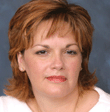California -- Another Florida?

California's monumental task of staging a short-notice, special recall election has some experts using the dreaded "F" word: Florida. The effort to recall California Gov. Gray Davis has caught many of the state's 58 counties off balance.
California's monumental task of staging a short-notice, special recall election has some experts using the dreaded "F" word: Florida.The effort to recall California Gov. Gray Davis before his term expires has caught many of the state's 58 counties off balance. They're in the midst of trying to replace outdated punch-card voting methods with more modern equipment, such as touch-screen systems.What's more, California election officials face the prospect of a large voter turnout, including many first-time voters, who will be given a ballot with the candidates' names -- all 135 of them -- listed in random order. This, along with the short time frame election officials have to prepare ballots and machines, increases the likelihood of miscounts and other mishaps in the nation's most populous state."There's a major concern in election circles that we've got another Florida-like situation ready to happen in California," said Kim Brace, president of the Washington-based election management services firm Election Data Services Inc., referring to the ballot counting controversy that embroiled Florida in the 2000 presidential election. Voting analysts said the Oct. 7 vote to determine whether Davis should be recalled and, if so, who should succeed him is forcing some counties to delay until next spring replacements that were scheduled for this fall. Election officials normally have six months or more to prepare for an election, but California officials are scrambling to get the election organized in half that time. The results of the election may not be known the same day, because some counties using outdated systems may require several days to tabulate votes, they said."All of our counties are working overtime now just to pull the [recall] election off," said Kim Alexander, president of the California Voting Foundation, a nonprofit elections watchdog group in Davis, Calif.To deal with anticipated problems, California Secretary of State Kevin Shelley, who serves as the state's chief election officer, announced in August that the state would launch a massive voter education campaign to ensure that votes are cast properly on the different systems used throughout the state, particularly punch cards. A SHOTGUN ELECTIONLike many other election officials throughout the country, California officials are moving fast to comply with the Help America Vote Act of 2002, which requires states to replace punch-card systems and establish statewide voter registration systems. Switching to new equipment became even more urgent for some California counties earlier this year. U.S. District Judge Stephen Wilson ordered nine of the state's largest counties, including Los Angeles, Sacramento and San Diego, to replace their punch-card systems in time for the 2004 presidential election rather than by 2005, as Shelley previously instructed.In addition to equipment shortcomings, state election officials face a major challenge educating new voters for the recall election, Alexander said. Ordinarily, voter turnout is low for special elections, but the gubernatorial recall is expected to produce a high turnout, she said. "This is the kind of event that has people talking in their workplaces and around water coolers," she said.The recall ballot includes such prominent names as actor Arnold Schwarzenegger and Lt. Gov. Cruz Bustamante, among various political figures and colorful personalities. "You have to be living under a rock to not know we are having a [gubernatorial] recall election in California," Alexander said.This means that many first-time voters will participate, and they will have to acclimate themselves to a large ballot, she said. All voters may find the ballot difficult to navigate, because it is not in alphabetical order, she said. That is because of a state law that requires the names on a ballot to be rotated throughout California's various voting districts, giving each candidate a chance to appear at the top of the ballot.Poll worker training and voter education are crucial to the success of the October recall as well as next year's elections in California, when some of the state's largest counties are required to replace systems decertified by the courts. It takes months, not weeks, to successfully transition to new voting equipment, said government and industry election officials. Careful planning is necessary during the transition to ensure that the new equipment works properly, and voters and poll workers know how to use it. The October recall, however, has upset county officials' plans to implement new voting equipment in low-profile local elections this November, Alexander said. "All of the 'backward planning' that county officials had undertaken earlier this year is getting thrown out the window because of the recall," she said. Alexander said elections are a lot like weddings, in that both require extensive planning to ensure success. "This [gubernatorial] recall is shotgun wedding, if there ever was one," she said.Shelley, who released his blueprint for election reform in June, said California expects to receive between $160 million and $170 million in federal funding this year to help it comply with the Help America Vote Act. Shelley wants to modernize equipment, make polling places accessible to disabled voters, expand voter education and improve education and training of election officials and poll workers. Election and industry officials strongly advocate using electronic voting systems on the grounds that they provide a more accurate representation of the voter's selection -- they are not likely to raise questions over the voter's intent. Several counties in California have a strong track record using electronic voting systems. For example, Riverside County has used touch-screen machines in 19 elections since November 2000, said Mischelle Townsend, county voter registrar. The county purchased 4,250 Sequoia Pacific AVC Edge touch-screen machines for about $14 million from Sequoia Voting Systems Inc. of Oakland, Calif., she said. By phasing out optical-scan machines that required paper ballots, the county has saved between $500,000 and $600,000 annually, she said. Other counties undoubtedly hope to realize similar savings when they switch to e-voting systems next year. Orange County awarded a five-year, $26 million contract to Maximus Inc. of Reston, Va., earlier this year to implement an e-voting system composed of 9,000 eSlate rotary optical encoder machines, manufactured by Hart InterCivic Inc. of Austin, Texas. An eSlate machine retails for about $2,500, said Bill Stotesbery, Hart Intercivic's director of marketing. [IMGCAP(1)]The bulk of the equipment was delivered to the county in August, said Lena Settergren, Maximus' vice president of workforce services. Maximus, the prime contractor, will oversee contract compliance and train poll workers, Settergren said. Hart InterCivic, the subcontractor, will configure the equipment, train election officials and provide expertise, said Bill Stotesbery, Hart InterCivic's director of marketing. The companies declined to disclose how payment will be split between them. A few systems will be upgraded for the Oct. 7 recall. Sequoia is moving quickly to install the AVC Edge for Shasta County in time, said Alfie Charles, Sequoia's public affairs director.As California and other states transition to e-voting systems next year, they will have to make the necessary provisions to properly store and maintain the equipment, voting analysts said."[Election officials] are scared about the cost of maintaining electronic machines," Alexander said. "You can't just stick them in a warehouse and dust them off every two years." Christopher Baum, vice president and research area director for e-government at the research firm of Gartner Inc., Stamford, Conn., agreed."Maintaining new systems isn't usually too bad. The toughest part seems to be the audit tape printer and making sure that the tape doesn't run out during the election," he said."Storage is another issue, however," he said. "Most of the new machines need to be stored and transported in climate-controlled environments." Despite these warnings, California election officials are confident the e-voting systems are up to the task. "We've transported these [machines] over desert, mountains and valleys for 19 elections, and we haven't had any breakdowns during equipment transfers," Townsend said. *Staff writer William Welsh can be reached at wwelsh@postnewsweektech.com. XXXSPLITXXX-Fifty-three of California's 58 counties will use some form of paper ballot during the Oct. 7 recall, but not all of those methods are considered inaccurate or have been decertified, according to Kim Alexander, president of the nonprofit California Voting Foundation in Davis.Of the counties using paper ballots, 32 will use an optical-scan system, and 21 will use some type of punch-card method, according to the California secretary of state. Five counties will use touch-screen machines, a direct-recording electronic system. An issue with the punch cards is whether the card is pre-scored or pre-cut, Alexander said. Federal and state election officials have deemed the pre-scored cards inaccurate and unreliable, but have not made such an assertion about punch cards that are not pre-scored, she said.The five counties that will use touch-screen machines are Alameda, Merced, Plumas, Riverside and Shasta, according to the secretary of state. That number is expected to more than double by the 2004 presidential election, voting analysts and company officials said. California uses direct-recording electronic systems manufactured by Diebold Inc., North Canton, Ohio; Sequoia Voting Systems Inc., Hayward, Calif.; and Election Systems and Software Inc., Omaha, Neb. -- By Staff Writer William Welsh

(On Sept. 15, an appeals court delayed the voting. Click for Daily News Updates)

Lena Settergren, Maximus vice president of workfoce services
(On Sept. 15, an appeals court delayed the voting. Click for Daily News Updates)